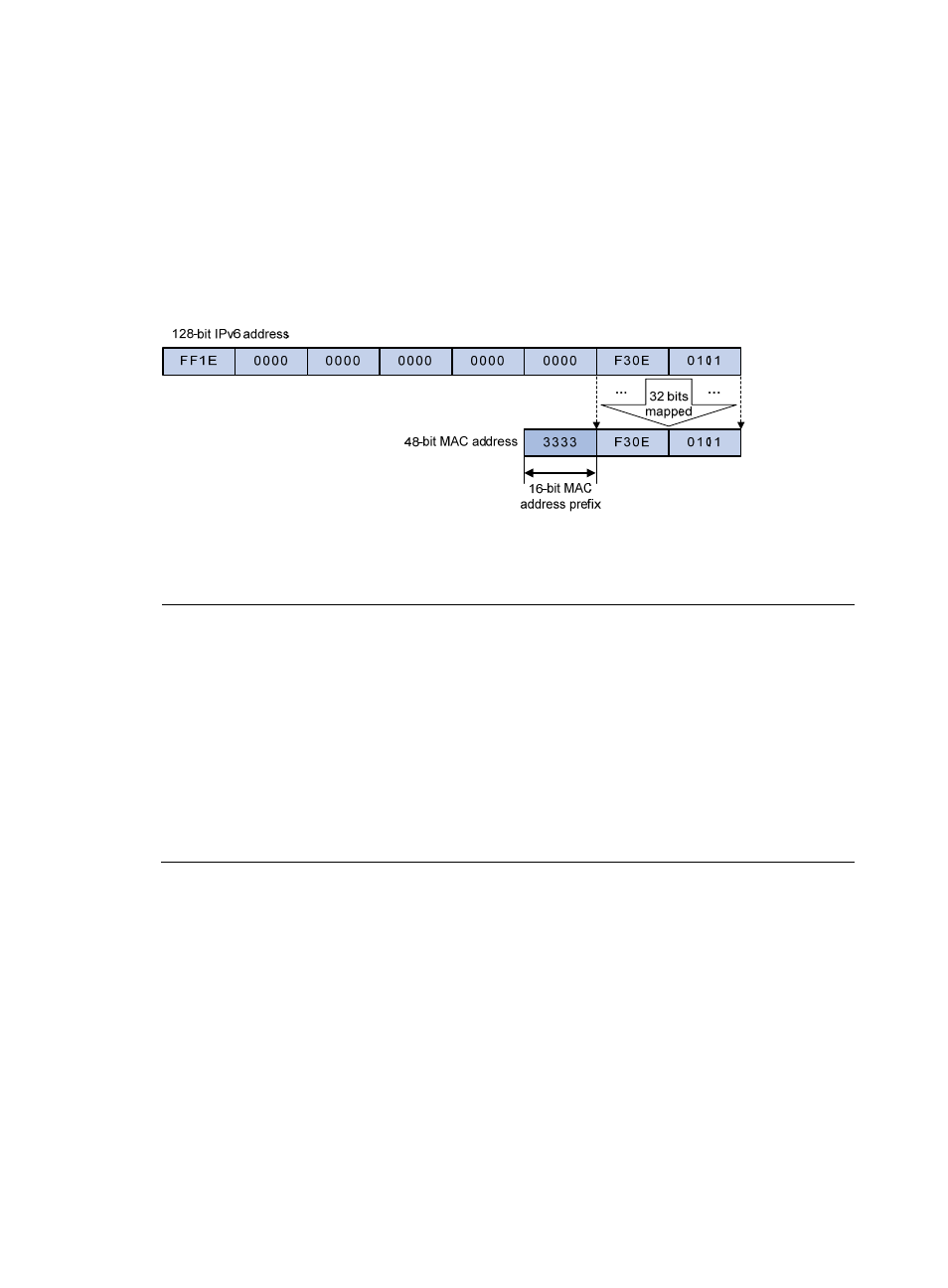Multicast protocols, Layer 3 multicast protocols – H3C Technologies H3C S10500 Series Switches User Manual
Page 24

9
The most significant four bits of a multicast IPv4 address are 1110, which indicates that this address is a
multicast address. Only 23 bits of the remaining 28 bits are mapped to a MAC address, so five bits of
the multicast IPv4 address are lost. As a result, 32 multicast IPv4 addresses map to the same IPv4
multicast MAC address. Therefore, in Layer 2 multicast forwarding, a switch might receive some multicast
data destined for other IPv4 multicast groups. The upper layer must filter such redundant data.
2.
IPv6 multicast MAC addresses
The most significant 16 bits of an IPv6 multicast MAC address are 0x3333. The least significant 32 bits
are the least significant 32 bits of a multicast IPv6 address.
Figure 7 An example of IPv6-to-MAC address mapping
Multicast protocols
NOTE:
•
Generally,
Layer 3 multicast refers to IP multicast working at the network layer. The corresponding
multicast protocols are Layer 3 multicast protocols, which include IGMP, MLD, PIM, IPv6 PIM, MSDP,
MBGP, and IPv6 MBGP.
Layer 2 multicast refers to IP multicast working at the data link layer. The
corresponding multicast protocols are Layer 2 multicast protocols, which include IGMP snooping, MLD
snooping, PIM snooping, IPv6 PIM snooping, multicast VLAN, and IPv6 multicast VLAN.
•
IGMP snooping, PIM snooping, multicast VLAN, IGMP, PIM, MSDP, and MBGP are for IPv4, and MLD
snooping, IPv6 PIM snooping, IPv6 multicast VLAN, MLD, IPv6 PIM, and IPv6 MBGP are for IPv6.
•
This section provides only general descriptions about applications and functions of the Layer 2 and
Layer 3 multicast protocols in a network. For more information about these protocols, see the related
chapters.
Layer 3 multicast protocols
Layer 3 multicast protocols include multicast group management protocols and multicast routing
protocols.
